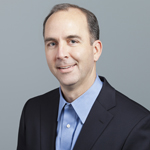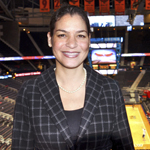It’s Anthony Sanders’s job to constantly make the workplace better for EZCORP, Inc.’s global team of more than 7,500 employees. The Austin, Texas-based pawnshop and short-term consumer operator has employees in four countries and annual revenues of $1 billion, which makes Sanders’s role a big task. So what’s this senior vice president of human resources’ elegant solution? A top-down approach with a talent-development program for senior executives.
What’s your working definition of talent management?
Anthony Sanders: From my perspective, it’s managing the complete employee lifecycle. It starts with the identification of the business needs. It continues with the identification of the talents pools from which to select candidates. It moves on to candidate identification and selection. From there, it’s the onboarding of the employee, which takes around 90 days. It continues with the development of the employee to his or her full potential. The cycle ends when the employee at some point leaves the company.
How do you expect EZCORP’s senior-management talent development program to help you become a better leader?

Shanna Munro
President, Cash Converters Canada
“To enable me to better facilitate change [and] stay curious before judging.”

Barry Guest
President, US Retail Operations
“To help me to become more strategic and less tactical.”

Jodie Maccarrone
Managing Director, Change Capital
“To make better presentations in order to be more engaging and precise”
What was the impetus behind your talent- development program for senior executives at EZCORP?
Sanders: Our first goal is to improve each executive’s individual performance. The second goal is to improve each executive’s performance as a part of our leadership team—essentially, their ability to collaborate. One is about how they manage their business area; the other is about how they function as a leader in the collective business.
How does the program work?
Sanders: For our top 12 individuals, we’re developing customized 12–18 month programs. We started by having one-on-one interviews with each executive. Those interviews were designed to determine the executive’s strengths and challenges, what type of development they’ve done in the past, what they consider their own developmental needs, and their wish list of courses to attend. We then will develop a list of options for each executive. We’ll then go back to each executive, discuss those options, and help them select the ones that work best. Then we’ll start the program itself.
What are some of the options?
Sanders: Some executives will want to attend off-site programs—for example, at Harvard, Stanford, or the University of Michigan. Some individuals may determine they need to read more, and we’ll help them select six or so business-leadership books per year and create a reading schedule. We don’t want to limit the universe of options, as each program will be designed to meet the individual needs of the respective executive.
Do you foresee any challenges with the program?
Sanders: There are huge challenges. One is we’re designing individual programs, but we have to ensure that everyone is speaking the same language. Someone who attends a program at Harvard will be learning something different than someone who attends a program at Stanford. Executives will be reading different books. The challenge is to bring all 12 programs together to ensure that they’re all on the same page. From my perspective, good business is good business, and there will be key principles that will be taught in any high-quality program or literature.
Have you considered the impact of turnover?
Sanders: We’re going to have, over the course of 12–18 months, some people leave the group and new people come onboard. Getting them started will be a challenge.
What are the keys to success for a talent-development program?
Sanders: All of your talent programs have to work under the umbrella of the organization’s mission and value statement; you design your competency and behavior factors there. From there, the CEO has to support the development of senior executives to get them to participate, especially since everyone is pressed for time. Then, you have to identify the people who need to exhibit the leadership behaviors you desire from rank-and-file employees. If senior executives don’t live your leadership behaviors every day, we aren’t going to be successful in developing leaders below that level.
Why are you the person to do this job?
Sanders: We’re trying to transition EZCORP from a small-company mentality to a large-company mentality without the large-company bureaucracy. In addition, we are moving from a centralized structure to a decentralized structure. Having led major changes at three Fortune 100 companies has helped prepare me for the challenges at EZCORP.
Have you always worked in HR?
Sanders: I’m a CPA by training, and I started my career in public accounting. I was drafted into an HR role in 1998, when I was working for Baker Hughes, Inc. It was a promotion and a good opportunity to work at a more senior level in the organization where I could have a greater impact. In my first HR role, I was responsible for benefits and compensation for the entire company, which had 30,000 employees operating in 35 different countries. I also was responsible for human resources for the corporate office.
How did you get into talent management?
Sanders: I went from Baker Hughes to ConAgra Foods, Inc. in 2000, and became responsible for transforming the entire HR organization, including processes, systems, and culture. That’s when I got involved in talent management, mainly from an administrative perspective with a focus on the processes involved in talent management and the selection of tools. In my current role, I’m responsible for all the people issues—policies and procedures for rank-and-file employees, selection and development of senior executives, and interaction with the board of directors regarding human-resource issues.

